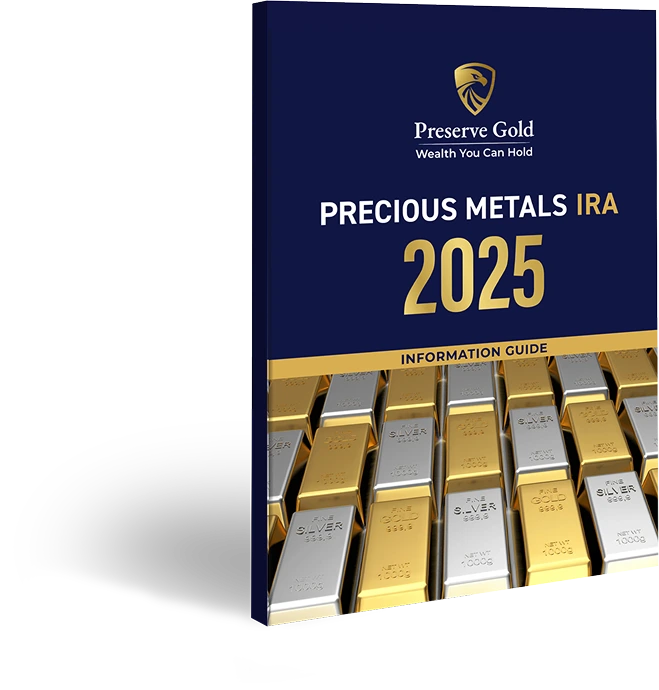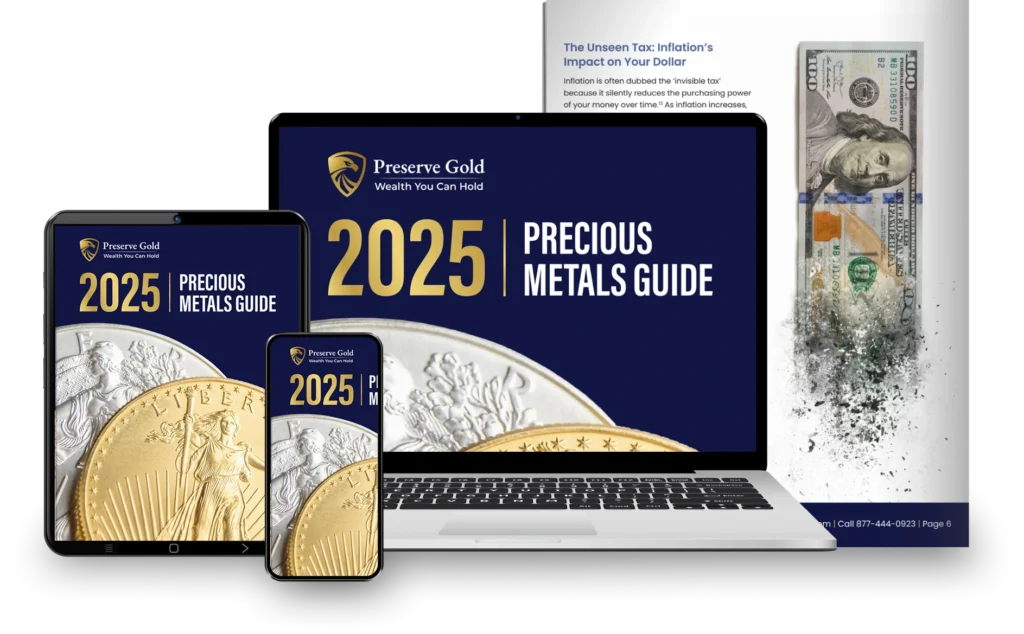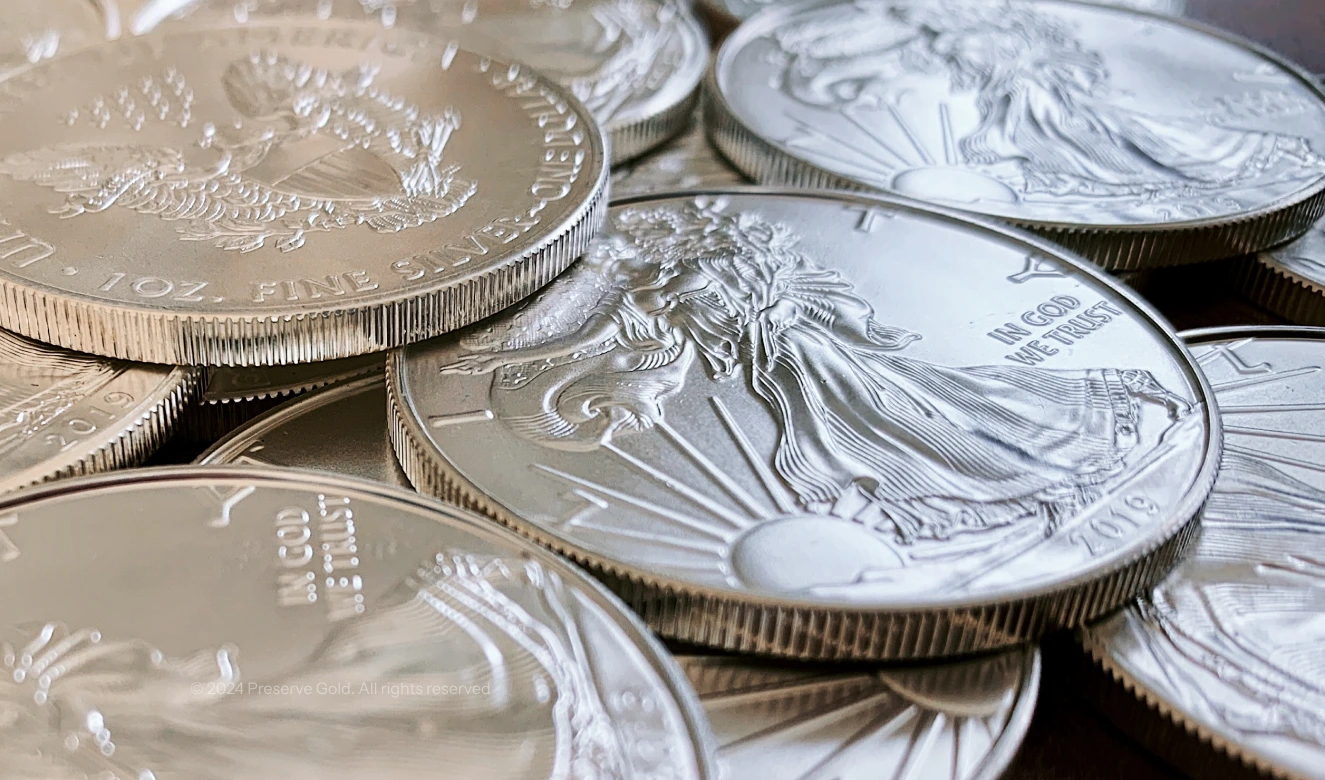From 2024 to 2025, the price of gold soared more than 40%, making this an asset class worthy of even more attention than usual. Considering recent inflationary pressure, ever-present geopolitical uncertainty, and growing concerns about long-term wealth preservation and accumulation strategies, investors are looking for ways to protect and grow their nest eggs.
As one of the most well-recognized and reliable forms of currency, gold has long been a preferred choice for individuals and institutions looking to help protect their wealth through diversification. In today’s increasingly turbulent economic climate, the advantages of buying gold and owning physical precious metals are clear. Renowned for its inherent qualities — rarity, portability, durability, fungibility, and divisibility — gold’s historically enduring value and reliable returns make it the ultimate store of wealth.
Why buy gold? Explore the key benefits, a few disadvantages to consider, and steps on how to get started.
High Liquidity And Accessibility
Having “liquid” assets is beneficial because you can easily convert them into cash when needed. Gold is considered one of the most liquid assets you can acquire because you can trade it in for cash without losing significant value in conversion or transaction fees.
Contrast this to real estate, art, antiques, or heirloom jewelry, which can take months (or years) to sell, and you run the risk of losing significant value through third-party intermediaries and other factors related to liquidating these assets. For stocks and other non-tangible investments, the selling process often involves paying steep commissions and fees along with at least a short waiting period.
Owing to its unique qualities and long-standing status as a store of wealth, gold’s value is universally recognized, making it one of the most liquid and easily tradable forms of currency. Its enduring appeal as a store of wealth lies in its ability to retain its purchasing power on a scale that few other assets can match.
Portfolio Diversification
Common sense dictates that it’s seldom (if ever) a smart idea to hold all your eggs in one asset class. Therefore, when thinking, “Why buy gold?” even if you already have stocks, bonds, real estate, cryptocurrency, etc., adding precious metals like gold can be a smart risk mitigation strategy to ensure that your investment portfolio remains intact, even in the face of other assets losing value.
Gold’s low correlation to other assets, like stocks and bonds, has allowed it to remain a reliable source of stability. By diversifying with gold, owners can limit their risk exposure and ensure that their wealth is adequately insulated from downturns. With many analysts suggesting growing fears of inflation, currency debasement, and further market volatility on the horizon, the security that gold can help provide is as valuable as ever.
Hedge Against Inflation
Over the past 30 years, inflation has averaged around 3.8%, and the years following the COVID pandemic were significantly higher. While the “price” of many asset classes can rise with inflation, it’s important to realize that this doesn’t necessarily reflect the actual underlying value of the asset.
Historical events across the globe have demonstrated the fragility of paper money and the risk associated with relying solely on fiat. Because it’s not backed by gold, paper money can be printed at will, leaving economies vulnerable to inflation.
The good news is that when fiat currencies lose value, which is precisely what happens during inflation, gold typically retains its worth, giving investors answers to the question, “Why buy gold?” Further, during this period of inflation, gold has consistently held its value, outpacing the documented inflation rates. Specifically, gold has historically gone up an average of 10.6% per year.
Imagine that in the year 2000, you purchased $1,000 worth of gold and held on to it until today. Gold was approximately $279.29 per ounce in 2000 — $1,000 would’ve bought about 3.58 ounces. Today, when gold prices are lingering around $3,000 per ounce, that gold would be worth around $10,000!
In contrast, imagine that in the year 2000, you placed $1,000 in a safe deposit box. Today, you pull out the cash and still have $1,000, but its buying power is around half of what it was in 2000 due to inflation. Essentially, your cash has lost half of its value.
A Proven Long-Term Store Of Wealth
Gold’s status as a store of wealth has been established over centuries of monetary exchange and global financial crises. As one of the world’s oldest currencies with no counterparty risk, gold is one of the few assets that has not only stood the test of time but also been proven to offer attractive returns during times of economic uncertainty.
Unlike intangible assets and paper money, gold has intrinsic value. In other words, gold’s value isn’t subject to government policies or economic crises. By contrast, fiat currency has value because governments and the people say it does.
Gold, on the other hand, is valuable on its own. It is a limited resource with a demand that keeps rising due to its use in jewelry, technology, aerospace, medicine, dentistry, and more.
Gold was one of the few assets that held its value during the Great Depression as the economy crashed and spiraled into a prolonged period of deflation. More recently, gold outperformed most other major asset classes in the wake of the 2008 financial crisis.
Holding gold gives you a sense of security and control over your wealth. Like other precious metals, gold is universally recognized and revered as a symbol of wealth and stability.
How To Start Investing In Gold
If you are interested in investing in gold, you’re in the right place! Our experts can help you get started and further answer the question of why buy gold. When you speak to one of our specialists, you’ll review the following:
- Type of gold investment: Choose from physical gold like coins, bars, or rounds. You can also explore opening up a gold-backed self-directed IRA to invest for retirement.
- Amount of the investment: There’s no single “right” answer about how much to invest. The amount will likely depend on your current portfolio distribution, age, net worth, and overall goals. We recommend you consult with your financial advisor for the best advice regarding your unique situation.
- Secure storage solutions: Again, you have options here, including home safes, bank vaults, or specialized storage facilities (required for a Precious Metals IRA).
Call Preserve Gold today at 877-444-0923 to speak with one of our precious metals specialists about investing in gold.







